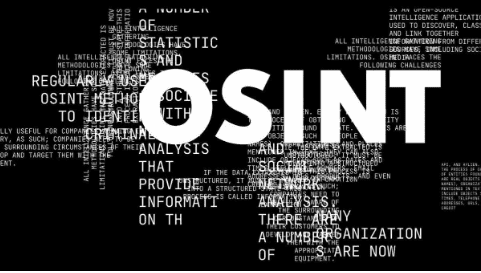Paycheck stubs are an integral part of the employment and payroll process, providing essential information about an employee’s earnings, deductions, and taxes. In 2023, understanding paycheck stubs remains critical for both employees and employers, as it contributes to financial transparency, tax compliance, and effective financial management.
This comprehensive guide will take you through everything you need to know about paycheck stubs in 2023, from their components and significance to how to read and utilize them effectively.
1. What Is a Paycheck Stub?
A paycheck stub, also known as a pay stub or pay slip, is a document issued by employers to employees along with their wages or salary. It serves as a detailed breakdown of an employee’s earnings and deductions for a specific pay period. Each pay stub provides transparency regarding how an employee’s gross earnings were calculated and where their money is allocated.
2. Components of a Paycheck Stub
A typical paycheck stub contains several key components:
- Employee Information: The employee’s name, address, and often an employee identification or social security number.
- Employer Information: The name, address, and contact details of the employer or company issuing the paycheck.
- Pay Period Dates: The start and end dates of the pay period for which the paycheck is issued.
- Pay Rate: This includes the employee’s hourly rate (for hourly employees) or salary (for salaried employees).
- Hours Worked: The total number of hours worked during the pay period for hourly employees.
- Gross Earnings: This section breaks down earnings into categories such as regular hours, overtime (if applicable), bonuses, and commissions.
- Deductions: Various deductions, including federal and state income tax, Social Security, Medicare, retirement contributions, and insurance premiums.
- Net Pay: The final amount the employee will receive after all deductions have been subtracted from their gross earnings.
- Year-to-Date (YTD) Totals: A summary of the employee’s total earnings and deductions from the beginning of the year up to the current pay period.
- Tax Withholding Information: Details about the employee’s tax withholding allowances and filing status, which affect the amount of federal and state income tax withheld.
- Benefits Information: Contributions to retirement accounts, health insurance premiums, and other benefits if offered by the employer.
3. Significance of Paycheck Stubs
Paycheck stubs hold significant importance for both employees and employers:
- Transparency: Paycheck stubs provide transparency about an employee’s compensation, making it clear how earnings were calculated and where deductions were applied.
- Budgeting: Understanding the components of a paycheck stub helps employees create accurate budgets, manage their finances effectively, and make informed financial decisions.
- Tax Compliance: Paycheck stubs play a crucial role in tax compliance by providing essential information for filing income tax returns and ensuring accurate tax withholding.
- Legal Documentation: Paycheck stubs serve as legal records of employment and income, which can be essential for obtaining loans, renting apartments, or accessing government programs.
- Benefit Tracking: Employees can use paycheck stubs to track contributions to retirement accounts and other benefits, aiding in financial planning and retirement readiness.
- Verification: Paycheck stubs can be used for employment verification when applying for new jobs or other financial opportunities.
4. How to Read and Interpret Paycheck Stubs
Understanding and interpreting paycheck stubs is vital for employees. Here’s a step-by-step guide on how to read and make the most of your paycheck stub:
- Review Personal Information: Ensure that your name, address, and identification details are accurate. Report any errors to your employer for correction.
- Examine Pay Period Dates: Confirm that the pay period dates match the timeframe you worked to ensure you’re being paid for the correct period.
- Understand Pay Rate and Hours Worked: Verify that your pay rate is correct and review the total hours worked if you’re an hourly employee.
- Calculate Gross Earnings: Add up your earnings for regular hours, overtime (if applicable), and any additional compensation like bonuses.
- Review Deductions: Examine each deduction line by line, including federal and state income tax, Social Security, Medicare, and other deductions. Ensure they align with your expectations and tax withholding allowances.
- Calculate Net Pay: Subtract the total deductions from your gross earnings to calculate your net pay, which is the amount you’ll receive.
- Check Year-to-Date (YTD) Totals: Review YTD totals to track your total income and deductions for the year. This helps with tax planning and financial management.
- Verify Employer Information: Ensure that your employer’s information is correct and confirm the paycheck date and payment method details.
- Understand Tax Withholding Information: Familiarize yourself with your tax withholding allowances, filing status, and the amounts withheld for federal and state income tax. Adjust as needed to align with your tax liability.
- Examine Benefits Information: If applicable, review contributions to retirement accounts, health insurance premiums, and other benefits.
- Check Leave Balances and Additional Information: If provided, review your accrued leave balances and any other relevant information.
5. Common Pay Stub Questions and Concerns in 2023
In 2023, employees may have specific questions or concerns related to their pay stubs:
- Electronic Pay Stubs: With the increasing trend toward paperless payroll, employees may wonder how to access and store electronic pay stubs securely.
- Tax Law Changes: Changes in tax laws or regulations may affect tax withholding calculations, leading to questions about the accuracy of tax-related information on pay stubs.
- Benefit Options: Employees may have questions about various benefit options and how their contributions affect their paychecks and overall financial planning.
- Payroll Schedules: Understanding and adapting to different payroll schedules, such as weekly, bi-weekly, semi-monthly, or monthly, maybe a concern.
- Paystub Software: Employers may use different software systems for generating pay stubs, leading to variations in the appearance and format of pay stubs.
6. Conclusion
In 2023, paycheck stubs continue to be essential documents for employees and employers. They provide transparency, financial clarity, and legal documentation of employment and income. By understanding the components and significance of paycheck stubs and knowing how to read and interpret them, employees can make informed financial decisions, ensure tax compliance, and effectively manage their finances. As technology and payroll practices evolve, staying informed about paycheck stubs and related concerns remains crucial for employees in the modern workforce.
Read Similar Articles:
How to Get a Paystub from Walmart: A Step-by-Step Guide
How to Obtain Your Pay Stubs from Kroger?
How to get Pay Stubs from Dollar General (DG)?
How to Get a Paystubs From Family Dollar?
How Do I Get My Paystubs from CVS?

As the editor of the blog, She curate insightful content that sparks curiosity and fosters learning. With a passion for storytelling and a keen eye for detail, she strive to bring diverse perspectives and engaging narratives to readers, ensuring every piece informs, inspires, and enriches.










